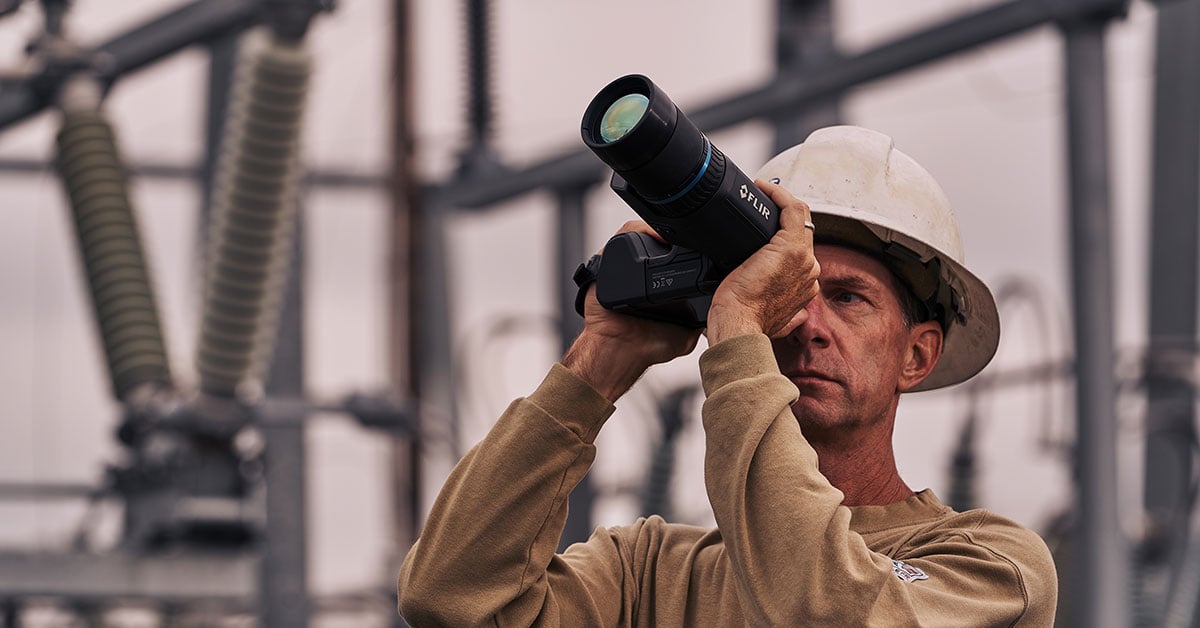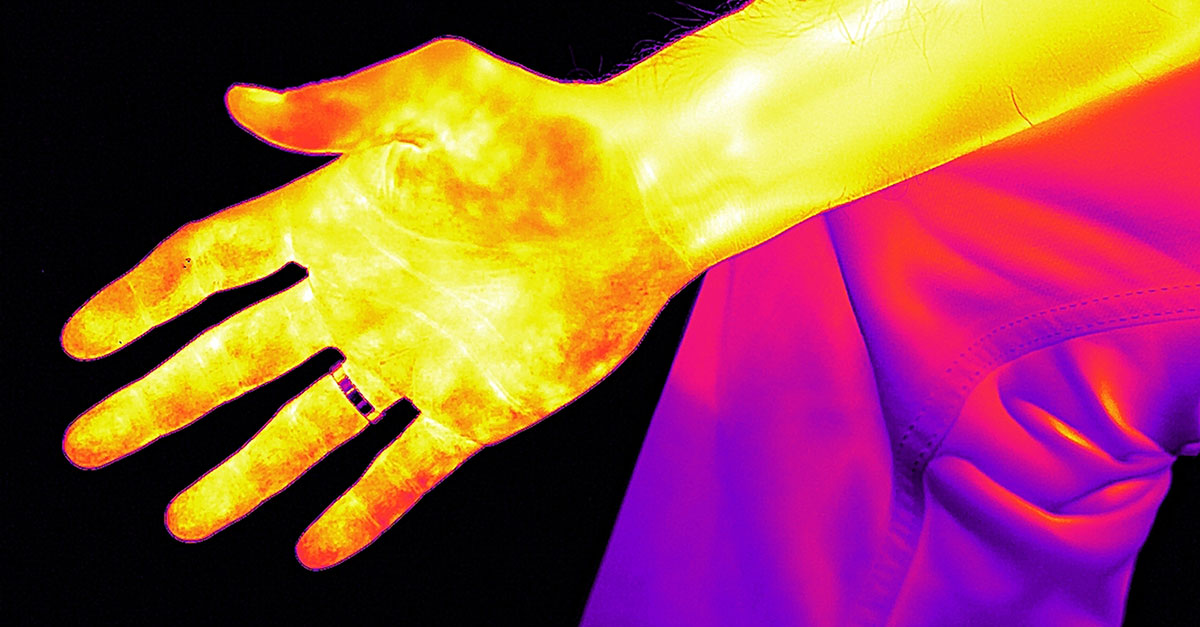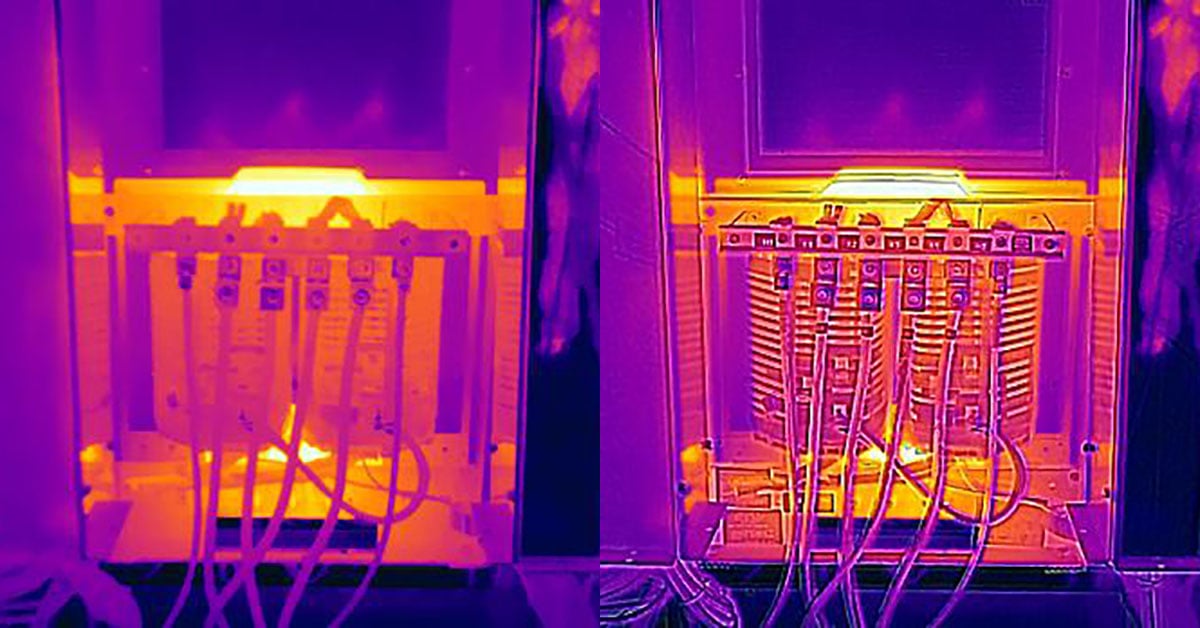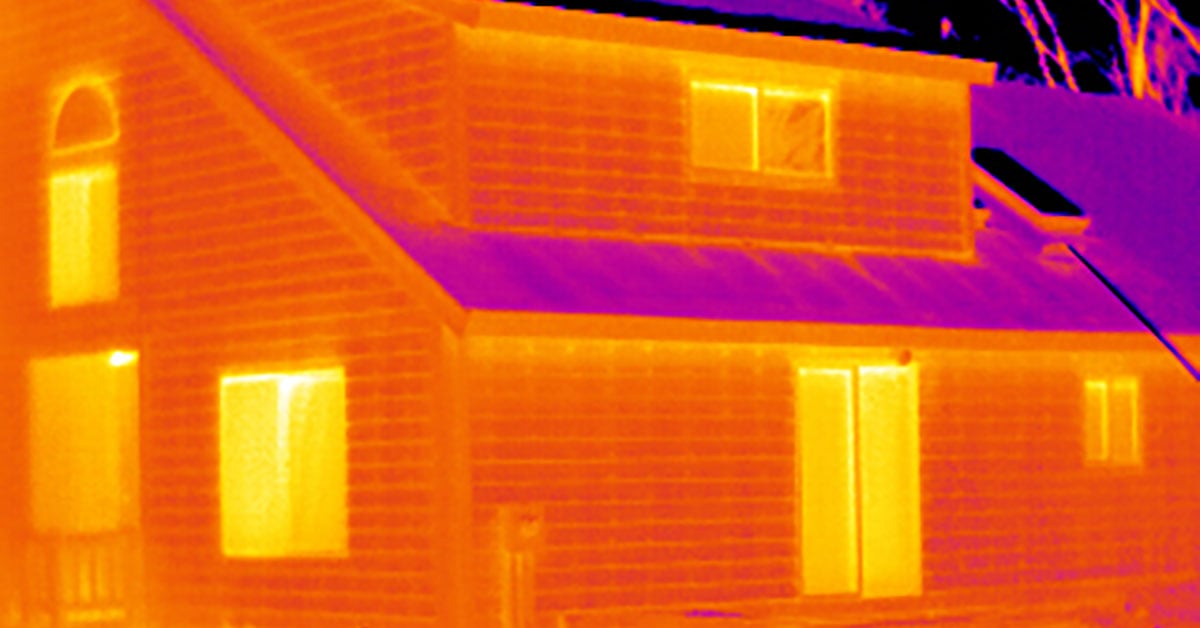How Far Can You Measure with a Thermal Camera?

A common question thermographers ask is “What’s the farthest target I can measure with my thermal camera?” The answer to this question is complicated, but essentially the distance you can measure depends on your camera’s resolution and field of view (FOV). A camera with a higher resolution will get you more pixels on the target you’re trying to measure, improving accuracy even from a distance. A narrow field of view—something like 6°—will magnify distant objects, again putting more pixels on distant targets.
When measuring temperature with a thermal camera, you want at least 3 × 3 pixels on your target to ensure you’re getting an accurate measurement. A general rule of thumb is to make sure the area you’re trying to measure overfills the spot size measurement tool on your camera. However, just because you can see something on your viewfinder does NOT mean you’re able to accurately measure it.

The target to measure should be at least 3 × 3 pixels and overfill the spot measurement tool.
How do you know whether you can measure a target accurately? The details are explained in our article Understanding Distance:Size Ratio which describes how to calculate how far you can be from a target of a given size and still get an accurate temperature measurement. This calculation requires some mental legwork, but for many applications there’s no need to bother with the complicated math.
When is it important to calculate the Distance to Size Ratio, and when can you probably skip it?
Distance Applications
The following types of applications generally will require long-distance measurements:
- Inspecting roofs or other high objects from ground level
- Monitoring power lines
- Monitoring electric substations and transmission lines
- Drone monitoring and mapping
- Drone solar farm inspection
- Distance inspections when it’s dangerous or impractical to get closer to the target
These applications will likely require you to calculate the distance:size ratio of your camera to ensure you get at least 3 × 3 pixels on your target.
Other Applications
The following types of applications generally don’t require long-distance measurements:
- Inspecting the inside of a house or building for air leaks, missing insulation, etc.
- Detecting moisture issues
- Inspecting a breaker box or other home wiring
- Monitoring transformers, motors, etc. in situations where it’s safe and practical to approach equipment
- Vehicle maintenance and repair
- Measuring large targets when you can easily ensure the target fills more than 3 × 3 pixels
Be aware that using the zoom function on your thermal camera only enlarges the pixels: it does NOT enhance your ability to measure small targets. If the target is particularly small, you may be able to get closer to make sure you have at least 3 × 3 pixels to measure. Be sure to follow all safety precautions and do not approach environments or equipment unless it is safe to do so.

The zoom function does not improve your ability to measure small targets. A higher resolution camera and/or telephoto lens is required if it’s not possible to get closer to the target.
If you have decided that you do need to perform distance measurements, what kind of thermal camera do you need? And which thermal cameras won’t suit your application?
Entry Level Cameras
The term “entry level” is used to refer to lower-resolution cameras like the FLIR C3, FLIR ONE, or lower-cost Ex-series cameras. These cameras are great for certain applications when you’re able to get close to your target and especially when the temperature difference you’re looking for is obvious. Lower-resolution options should not be used for distance measurements, especially if it’s important for your application to have accurate temperature measurements.
Cameras for Long-Distance Measurement
Higher-resolution cameras like those in the FLIR T-series and FLIR Exx-series will be better suited to making measurements at a distance. Cameras especially suited for distance work include the FLIR T840 and FLIR T860, which include telephoto lens options for temperature measurements of small targets from a distance.
Many FLIR thermal imaging cameras, like the ones mentioned above, now offer automatic connection to the FLIR IgniteTM cloud, which is a convenient location to store, organize, and share images, as well as produce quick reports that showcase repairs needed and repairs made. From Ignite, you can download and transfer images to FLIR Thermal Studio Suite. This state-of-the-art analysis and reporting software suite offers batch processing, thermal image analysis, custom reporting, and even leak-rate cost analysis for acoustic images.
Thermal Studio Pro has the added advantage of FLIR Route Creator with Reference Imaging which helps users organize efficient inspections that include reference images at each inspection point to ensure you collect comparable, historical data at each asset.
Check out our article Understanding Distance:Size Ratio for a full understanding of what you need to know when performing temperature measurements at a distance.


